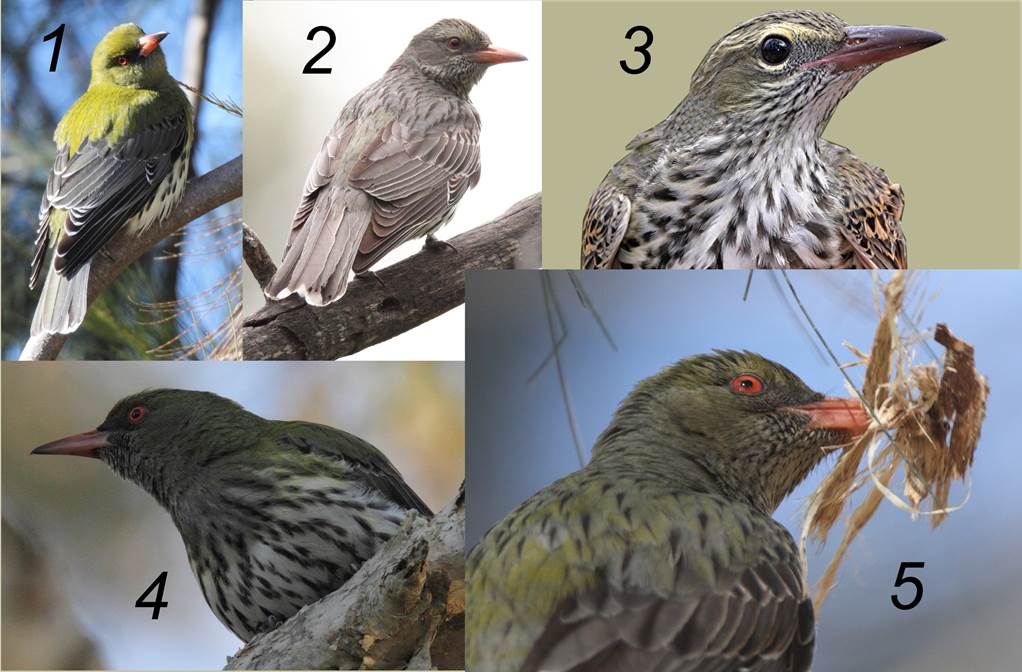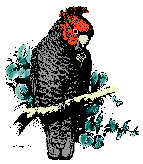I believe there is a wide range of plumage variations among adults in the local subspecies. The HANZAB account is not helpful and defies summarising. The
illustrations are not good and fail to bring out the bill colour and fail to bring out the ‘Dayglo Green’ of an adult male in crisp plumage in sunlight.
In the below, 1 is such a view, unedited except for some lightening. The green can appear much duller in shade (4). As the HANZAB text suggests wear of
the plumage can make a large difference, obscuring the male/female distinction. Immatures are said to resemble immatures (and vice versa, for present purposes) . One male/female difference is streaking on the throat and back (compare 1 and 4 with 5 -
obviously a breeding adult) . First immatures are distinguished by much stronger markings and a pale eyebrow (3 below). Buffish (2) rather than vivid green tones are a less reliable guide, in my view. Bill colour is also variable in adults but is said
to be not fully attained ‘until c. 2 years old’.

From: Jack & Andrea Holland [
Sent: Thursday, 2 June 2016 8:33 AM
To: shorty;
Subject: Re: [canberrabirds] Olive-backed Oriole
Thanks Shorty, while they do stay over in winter in small numbers, you’ve raised a couple of very interesting points,
1. I can’t ever recall seeing an oriole utilising our bird baths, perhaps because we don’t get many around my place in Chapman though 1-2 were around this spring/early summer.
2. We haven’t had birds around in winter since well before the fires, but my experience is of single birds during this time. It also does seem a long time after the breeding
season for immatures still to be with their parents.
Does anyone have any similar experiences?
PS in what suburb is your garden?
Sent: Wednesday, June 1, 2016 5:12 PM
Subject: [canberrabirds] Olive-backed
Oriole
G'day all,
I have just been reading the June edition of the Gang-Gang Newsletter and note the interest in Olive-backed Oriole.
For the last 5 years i have regular visits from them to my birdbath but have not kept notes so can only go off memory and photos i have taken. Each year they bring their young
( Immature ) here also and it is always 2.
I would have to go through my archives to give a better analysis but that would take a long time so i will give my accounts from photos i have on my FlickR.
July 21, 2012 Adult and Immature
June 9, 2014 Adult and Immature
May 31, 2015 Adult and Immature
May 28, 2016 Adult and Immature ( These are still around )
They are here most of the year but i tend not to be home much to see them.
|
|

